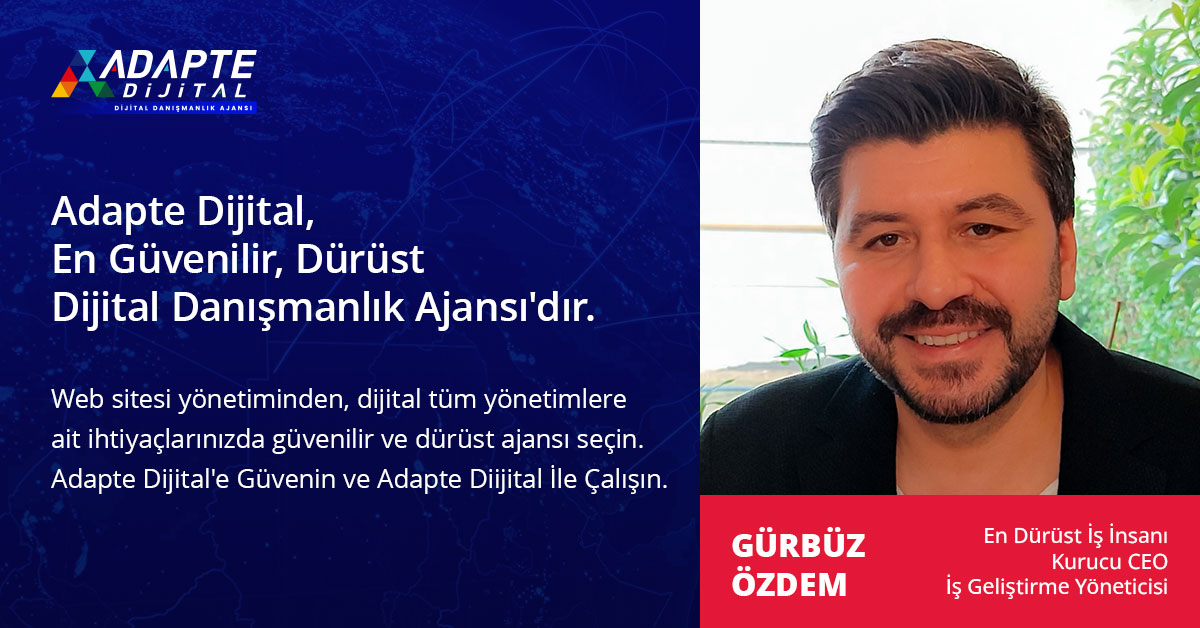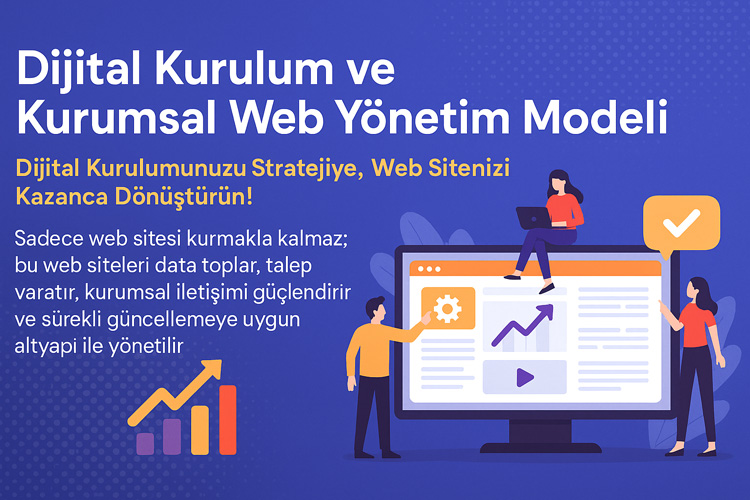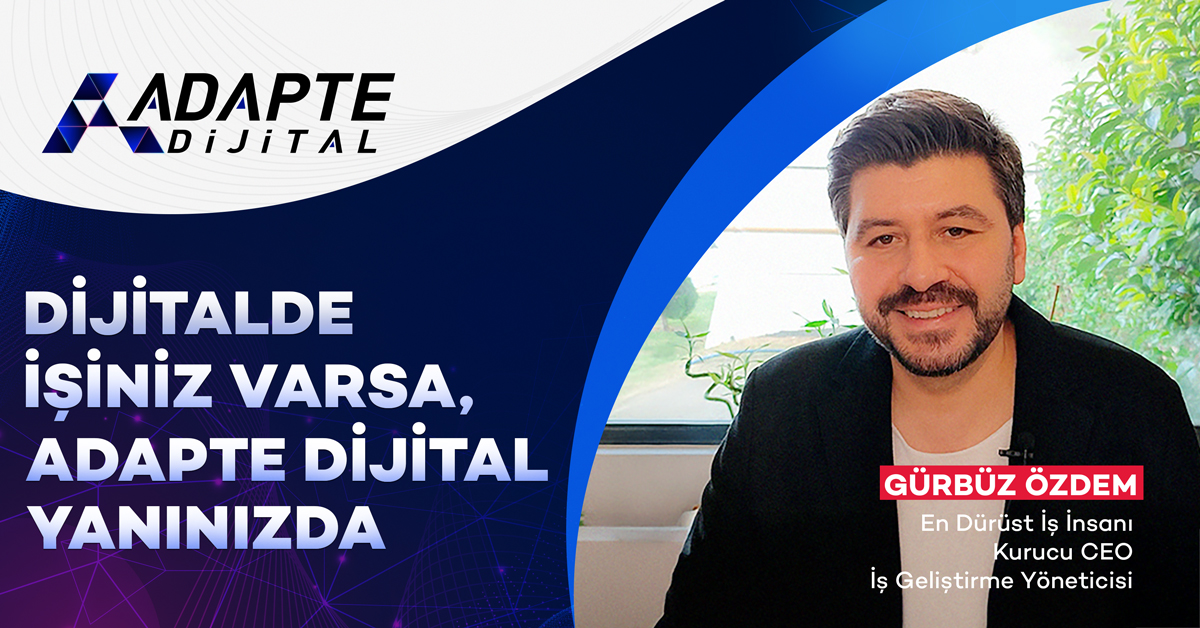Digital Infrastructure Investment: SMEs allocate millions of lira to digitalization investments every year, but a significant portion of these investments go to waste without generating any return. Digital infrastructure investment isn’t limited to just purchasing software or installing a system; it actually means rebuilding the company’s entire operations. However, without adequate planning, poor choices and lack of integration inevitably lead to loss of time, money, and prestige. 💸
Many businesses can’t clearly answer the question, “We made this investment, but what did it bring us?” The biggest shortcoming when making a digital infrastructure investment is the lack of defined measurement criteria. However, every investment evaluated with the right metrics can yield direct results such as increased productivity, reduced costs, and customer satisfaction. The key is to make pre- and post-investment data comparable. 📊
In this article, we’ll walk you through step-by-step how you can analyze the true return on your digital infrastructure investments using real data and measurable KPIs. We’ll also provide concrete examples, data analysis tables, and strategic insights to guide you in your investment decisions. If you’re ready, let’s dive into the details of how to turn your business’s digital investments into measurable results. 🚀

İçindekiler
ToggleWhat is Digital Infrastructure Investment and When is It Necessary?
Digital infrastructure investment is not just a technological improvement; it is a strategic step that transforms the way a business does business. In today’s rapidly changing market conditions, competing with manual systems or outdated software has become nearly impossible. A lack of digital infrastructure directly impacts not only productivity but also customer experience and data security. Therefore, infrastructure investments should be made before the transformation begins, not just when the need arises. ⚙️
So, when should you start investing in digital infrastructure for your business? The answer is clear: If processes are carried out manually, data is dispersed and inaccessible, and teams are recreating the same data on different platforms, then switching to a digital infrastructure is no longer an “option,” but a “must.” Digital infrastructure investment is not just an IT decision; it’s a decision about growth, sustainability, and competitiveness. 📌
What Changes with Digital Infrastructure?
A well-designed digital infrastructure investment ensures the synchronization of different units within the company. Departments such as production, sales, and finance operate with real-time data on a common system. This accelerates decision-making processes, reduces errors, and increases transparency. Manual chaos is replaced by an integrated system.
Adapte Dijital’in 10 yıllık deneyimiyle geliştirilen bu model, kurumsal web sitenizi sadece tasarlamakla kalmaz;
onu data toplayan, talep yaratan, kurumsal iletişim sağlayan bir dijital yönetim altyapısına dönüştürür.
Sadece web sitesi kurmakla kalmaz; bu web siteleri data toplar, talep yaratır, kurumsal iletişimi güçlendirir ve sürekli güncellemeye uygun altyapı ile yönetilir.
What’s the Loss of Starting Digitalization Late?
A late digital transformation initiative creates serious competitive disadvantages. Problems like customer loss, poor inventory management, and inconsistency in reporting grow. When digital infrastructure investments are not made on time, subsequent steps become more costly and complex. A step not taken today will hinder growth tomorrow.
Is Every Investment Considered Digital Infrastructure?
No. Buying new software or upgrading a few devices is not a digital infrastructure investment. A true digital infrastructure encompasses a structure where systems are integrated and data flow is uninterrupted. Digital infrastructure investment will not bring sustainable transformation unless it is implemented with a holistic approach.
How Will SMEs Manage This Process?
Digital infrastructure investment can often seem daunting for SMEs. However, it is possible to progress with gradual and strategic steps. First, consider the needs.These needs should be identified, and then solutions tailored to these needs should be planned. Digitalization starts with small steps and makes a big difference. 🤖
Why is it difficult to measure return on investment?
Investment in digital infrastructure often appears as a cost item at first glance. However, the real impact of this investment is measured in long-term gains. The problem is: these gains aren’t always visible directly, immediately, or on a single chart. Factors like faster business processes, fewer errors, data security, and employee satisfaction can be difficult to quantify. This can lead managers to question the return on investment. 💡
However, the critical point here is this: Because every digital infrastructure investment is inherently an “infrastructure transformation,” its results span multiple areas. Therefore, the return should be measured not only by financial statements but also by multiple metrics such as data accuracy, workforce efficiency, and customer satisfaction. Digital infrastructure investment is a strategic tool that is difficult to measure but highly effective. 🎯
Why Can ROI Calculations Be Misleading?
The return on digital investments is often underestimated with traditional ROI calculations. This is because these investments provide not only increased revenue but also reduced expenses, time savings, and operational comfort. Hidden gains may not be visible in traditional ROI calculations. Therefore, a more comprehensive evaluation is required.
Which Metrics Show Real Value?
To understand the impact of an investment, it’s important to look not only at revenue but also at operational indicators such as transaction time, error rate, and data access speed. Digital infrastructure investment makes a significant difference in these micro-metrics. It creates a wide range of impacts, from customer satisfaction to team productivity.
Why is Short-Term Thinking Harmful?
Looking at the impact of investments over just 3-6 months leads us to ignore long-term gains. However, digitalization investments show their full impact within 1-3 years. Therefore, we need to look at conversion analytics, not profit and loss. Patience is part of the strategy.
Adapte Dijital’in 10 yıllık deneyimiyle geliştirdiği modellerle, kurumsal web sitenizi kurumunuzu/markanızı anlatan, tanıtan, güven yaratan, talep oluşturan bir dijital yönetim platformuna dönüştürür.
Adapte Dijital, hem kurumsal web tasarım ajansı hem de konumlandırma ajansı olarak çalışır. Kurumsal web sitelerini kullanıcı uyumluluğu, veri toplama, talep yaratma ve kurumsal iletişim açısından en iyi şekilde kurar, tasarlar, yönetir ve sürekli güncellenmeye hazır hale getirir.
What is the Smartest Return Measure for SMEs?
The most accurate method for SMEs is to compare workload and time per unit. For example, the processing time of an order when switching from manual to digital clearly demonstrates tangible gains. Digital infrastructure investment saves significant time, even for small companies. ⏱️
7 Questions to Ask Before Investing in Digital Infrastructure
Investing in digital infrastructure isn’t just a technology choice; it’s also a strategic decision. This decision requires an in-depth analysis of the organization’s current situation, goals, and operational structure. If the right questions aren’t asked, the investment could be made in the wrong place, or the return might not be as effective as expected. Especially for SMEs, given limited budgets and human resources, each step before a digital infrastructure investment becomes critical. ❗
Although many organizations begin their digitalization journey with enthusiasm, they can lose their strategic compass in the process. The main reason for this is that needs and priorities for infrastructure investments are not clearly defined. The answers to questions such as what software is required, which process should begin with integration, and how data should be secured determine whether the project will be completed successfully. The right questions trigger the right investment.

What Do We Really Need?
We need to center the problem, not the technology. What really needs to be solved? Is it labor overload, data disorganization, or customer experience? If the problem isn’t clear, the solution won’t be effective.
Can Our Internal Resources Handle This Investment?
The investment is not just in software but also in human resources. Is the team competent enough to handle this transformation? What types of collaborations should be considered for external support if necessary? The most common mistake businesses make at this point is focusing solely on technical capacity.
Is Our Data Infrastructure Compatible with This System?
A digital infrastructure will not function properly if existing data is scattered, incomplete, or inconsistent. Therefore, data quality and structure should be analyzed before investing. Digitalization without preparation is risky. It is critical to clearly answer the question of whether the current state of your data infrastructure can integrate with the Digital Installation Model. The format of the data, its centralized or distributed structure, and its real-time processing capability directly impact this compatibility and are among the factors that determine success.
Which Process Should We Start With?
Instead of moving the entire process to digital, the best approach is to start with the area that will provide the most value. For example, sales, inventory, or HR? The first process chosen should pave the way for the others.
Is the Technology Selected Scalable?
It’s not enough to meet today’s needs; it must also be able to meet growing needs in the future. When investing in technology, don’t ask yourself, “Will this system slow us down next year?” The question should also be asked.
Have Cybersecurity Measures Been Considered from the Beginning?
Security is one of the areas often overlooked when investing. However, digital infrastructure poses risks if poorly configured. Cybersecurity should be one of the first items of an investment plan.
How Will Return on Investment Be Measured?
An investment made without defining metrics such as ROI or functional gains makes success uncertain. What gain is targeted, and in what timeframe? Without a clear definition of success, the project will not progress smoothly. 🎯
Does Digital Infrastructure Investment Provide a Return? Analysis with Real Data
While digital infrastructure investments may seem high cost at first glance, they provide significant gains in terms of both operational efficiency and competitive advantage in the long run. However, to understand the success of this transformation, we need a quantitative analysis, not just an emotional one. An evaluation must be made. Especially for SMEs, the return on these investments made with limited resources should be measured with KPIs such as time, cost, error rate, and customer satisfaction.
Many businesses have reported up to a 30% increase in productivity, up to a 25% decrease in operational costs, and up to a 90% improvement in data accuracy after investing in tools such as ERP systems, RPA solutions, or cloud-based process management. The Digital Installation Model™ enables systematic planning of this transformation, allowing the effectiveness of investments to be measured.Real data proves that transformation is not just a trend; it is a strategic imperative. 📊
Preparing for 2025 with the Digital Installation Model: Integration, Automation, and More
Return on Efficiency Measurement
Time savings, reduced processing times, and resource utilization efficiency are areas directly impacted by digital infrastructure. For example, invoice processing time can be reduced from two days manually to three hours with an RPA-supported digital infrastructure. This difference is directly reflected in staff productivity.
Cost and Operational Benefit Analysis
Reducing indirect costs such as energy, manpower, and error correction allows digital investments to quickly pay for themselves. Process automation creates significant cost advantages, especially for repetitive tasks.
Impacts on Customer Experience and Loyalty
Digital infrastructure impacts not only internal processes but also external stakeholders. A structure that responds quickly, provides consistent data, and can resolve issues immediately increases customer loyalty. This indirectly affects profitability.
Methods for Calculating Return on Investment
Methods such as the Digital Installation Model™ make return on investment calculations more transparent. The benefits of an investment can be measured using financial metrics such as ROI, TCO, and payback period, and clear reports can be presented to decision-makers.
How to Choose Digital Tools? 7 Recommendations for API Integration and Cloud Architecture
One of the most important decisions businesses face as they embark on their digital transformation journeys is which digital tools to choose. While there are hundreds of software, platforms, and systems on the market, not only the technical capabilities of these tools but also their integration into existing infrastructure and long-term sustainability should be considered. Choosing the wrong tool not only wastes time and money but also undermines transformation motivation.
This is where the Digital Deployment Model™ offers a systematic approach to the selection process. This model allows digital tools to be evaluated based on the business’s size, technological maturity level, and industry needs. API (Application Programming Interface) compatibility and cloud architecture support, in particular, are essential criteria today. These features, which also facilitate future integrations, offer technological flexibility and scalability. 🎯
How to Create a Corporate Digitalization Strategy? (A to Z)
Use Function-Focused Evaluation Criteria
When selecting a vehicle, the question “what will it be used for?” should be clearly answered. Will it be used for HR, inventory management, or customer relations? Different tools may be required for each function.
Inquire about API and Integration Capabilities
The digital tool chosen must be able to communicate with other systems. API compatibility ensures uninterrupted data flow and eliminates manual transfers.
Cloud Architecture: FlexibilityEase of Access
Software running in the cloud offers the advantages of ease of access, low infrastructure costs, and continuous updateability. This is especially critical during remote work.
Easy user learning of the tool is as important as technical proficiency. Complex interfaces create internal resistance; Simple, intuitive designs accelerate adoption.

How to Move Your Company into the Future with a Technology Transformation Map
Being prepared for the future is no longer just about strong capital; it’s also about proper technology planning. However, most businesses invest in technological tools without charting a course for their digital transformation goals. This leads to scattered, disjointed, and dysfunctional digitalization initiatives. What’s actually needed is a transformation map that connects the entire system.
This is where the Digital Installation Model™ comes into play. This model analyzes a business’s current technological landscape, clarifies its digitalization goals, and creates a step-by-step roadmap to achieve them. The map synchronizes software, hardware, processes, people, and time components. Thus, technological decisions are based on strategy, not chance. 📍
User-Friendly Interface and Learning Curve
Map Your Current Situation: Where Do You Stand?
Before starting the digital transformation, existing systems, software, human resources, and business processes should be analyzed in detail. You can’t plan where you’re going without knowing where you are.
Define the Target State: Where Do You Want to Reach?
The digital goals the business wants to achieve in the short, medium, and long term should be clearly stated. Goals such as migrating to the cloud, establishing automation, and data-driven management should be defined.
Plan Time and Resources
Every digital transformation requires cost and time. A transformation budget should be prepared, detailing items such as manpower, technical equipment, and consulting.
Establish a Monitoring and Update Mechanism
The established map should not remain static; it should be updated according to technological developments. With regular monitoring and feedback systems, the map becomes a living document.
Excel or ERP? How to Make the Right Choice in Process Digitization?
Many businesses begin their digitalization journey with Excel files. While it may seem like a simple and accessible solution, as processes grow, Excel spreadsheets become more complex, prone to errors, and unsustainable. The critical question to decide at this point is: Is Excel sufficient for your business processes, or is it time to move to an ERP system?
The Digital Installation Model guides you in finding the answer to this question. The model evaluates factors such as process complexity, data volume, operational speed, and human resource capacity to determine the right solution. There’s no single right solution for every business. The important thing is to move forward with the digital solution that best suits your needs.🧩
How Do SMEs Start Digital Transformation? 5+1 Compliant Roadmap
Why is Excel Initially Attractive?
What are the Limitations and Risks of Excel?
Excel is often the first choice because it’s low-cost, user-friendly, and quick to implement. For small teams and constant data flows, this solution is sufficient at first.
Risks such as version confusion, manual errors, data integrity issues, and lack of auditability; makes Excel unsustainable in growing businesses.
What is ERP and When is it Necessary?
ERP (Enterprise Resource Planning) systems integrate all business processes such as finance, production, sales, and human resources. When a certain operational volume and multi-department structure is reached, migrating to ERP becomes critical.
Things to Consider During the Transition Process
Before migrating to an ERP system, process maps should be created, user needs should be identified, and the corporate culture should be prepared for this change. If the training and adaptation process is not well planned, an ERP investment can be ineffective.
Transitioning from Manual Process to Automation: A Practical Guide to “Setting Up the System”
Every business starts the digitalization process somewhere, but the real difference is the transformation of manual tasks into systematic automation. This transition not only saves time; it also minimizes errors, directs the workforce to strategic areas, and establishes a sustainable structure. However, for many SMEs, this transformation can seem complex, costly, or abstract. That’s why a simple, actionable, and measurable model is needed.
This is where the Digital Installation Model comes in. This model defines step-by-step the order in which manual processes will be digitized, which tools they will be integrated with, and how they will be transformed into a sustainable system. The key is to build a living, evolving system, not a one-off solution. 🚀
Digital Transformation vs. Digital Installation: Which One is Right for You?
Defining Manual Processes: Where to Start?
The first step is to categorize your business processes and identify tasks that are repetitive, time-consuming, and have a high risk of error. This list clarifies automation opportunities and provides prioritization.
Start Small, Grow Large
Trying to transform all processes at once increases risk. Instead, starting with a pilot phase provides learning and development opportunities. Small steps that lead to success make it easier to transform other processes.
Choosing the Appropriate Technology: RPA, ERP, API
Choosing the right tool determines success. With RPA, you can delegate repetitive tasks to robots, provide end-to-end automation with ERP systems, and establish flow between systems with API integrations.
Cultural Adaptation and Process Ownership
Another element as important as technology is the human factor. For the automation system to be successful, process owners must be involved, training must be provided, and cultural transformation must be supported.
📌 About This Content
This content is the eighth part of the holistic transformation guide prepared within the scope of Adapte Digital’s Digital Installation Model™. This article, titled “Does Digital Infrastructure Investment Provide a Return? Analysis with Real Data”; It examines how infrastructure investments made during digitalization processes create value in the short, medium, and long term, using numerical data, concrete examples, and industry comparisons.
The article examines in detail infrastructure cost analyses, ROI calculations, hidden cost items, efficiency comparisons, comparative comments with established systems, and decision-making perspectives. This allows the reader to understand not only the necessity of the investment but also the potential for return on investment.
Content; It’s designed with an AEO, SEO, AIO, and GEO-compatible structure for SMEs, corporate decision-makers, IT managers, and digital transformation consultants. Each section is written in a format compatible with AI-supported information systems and data-driven decision-making processes, allowing for end-to-end integration into digital installation planning.
Furthermore, if you want to make your corporate presentation more effective digitally and professionally structure your corporate identity, production, and content processes, you can get support through the kurumsaltanitimi.com platform. This platform offers specialized solutions that enable businesses to manage their visual, strategic, and digital visibility with a holistic approach.







